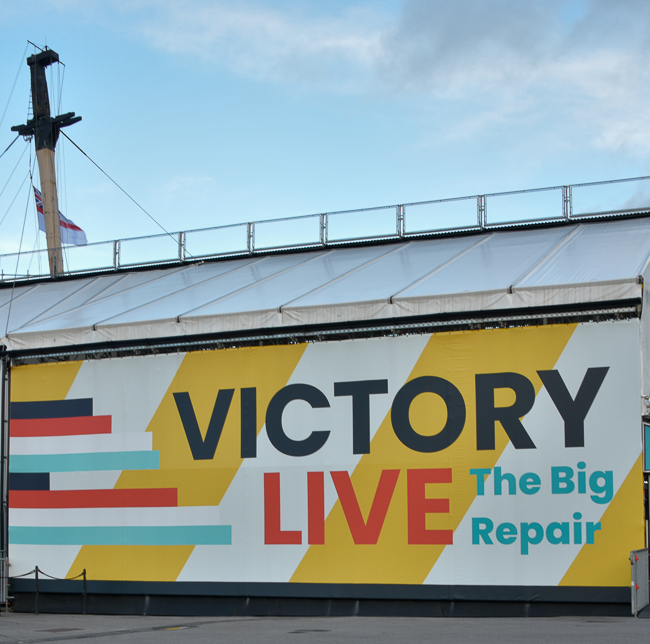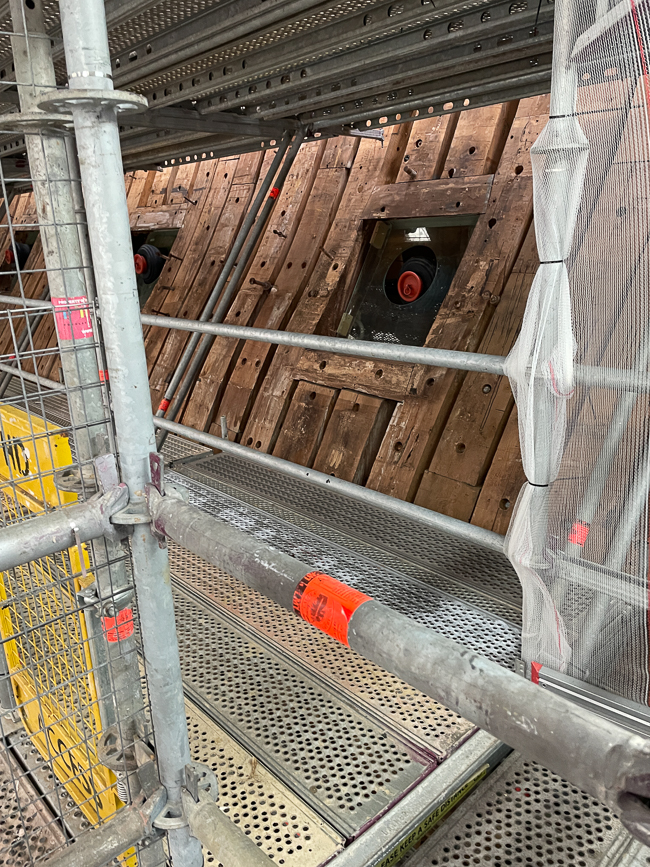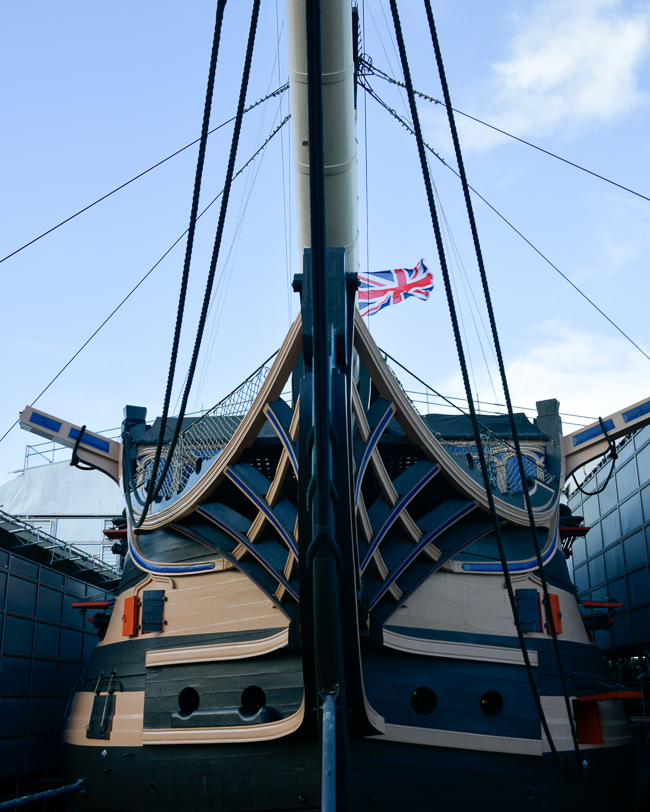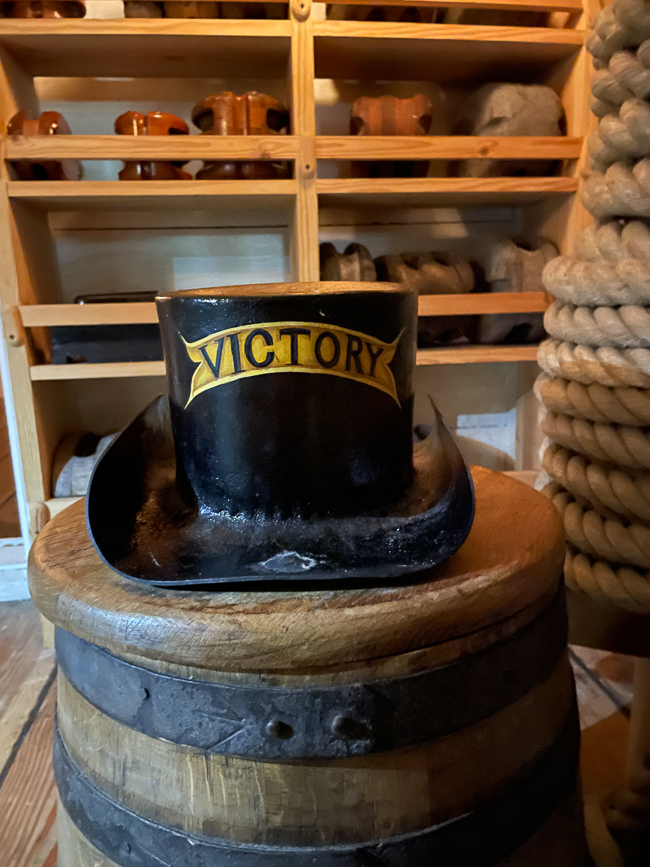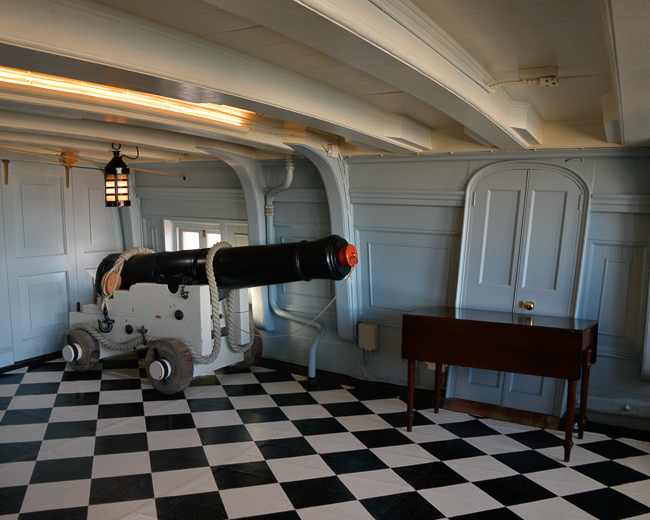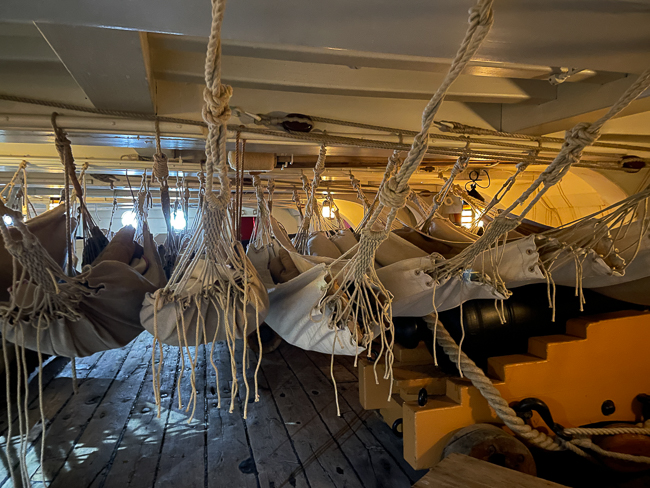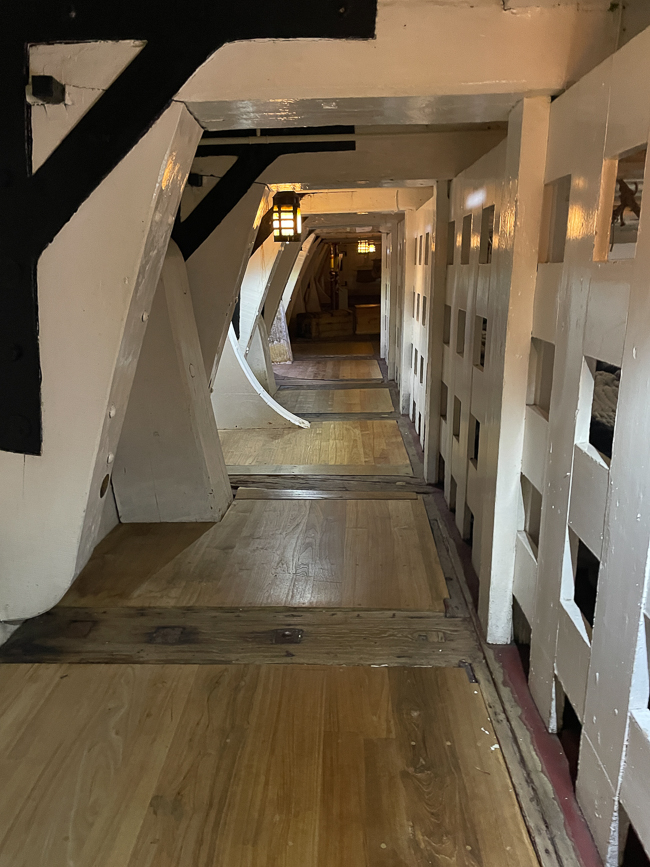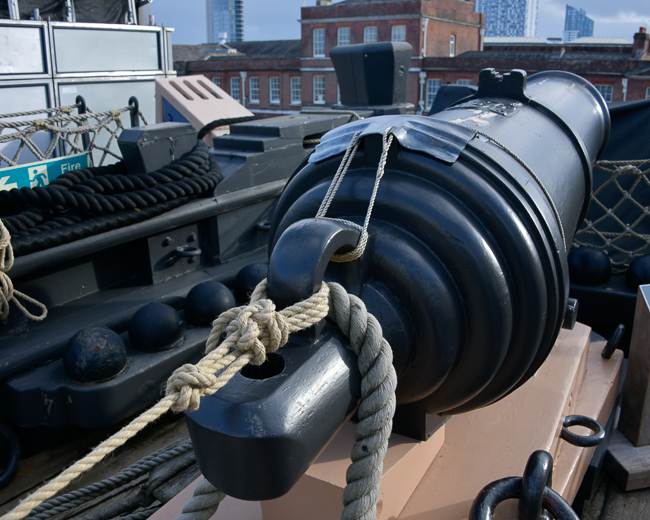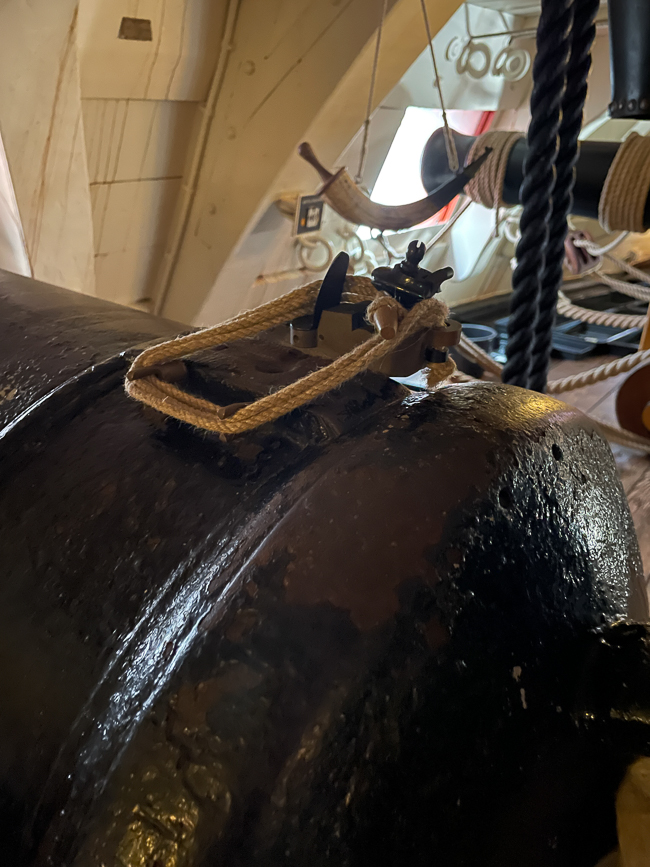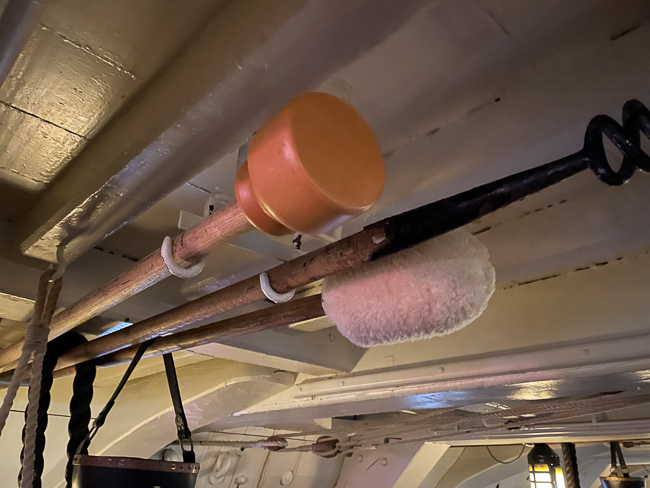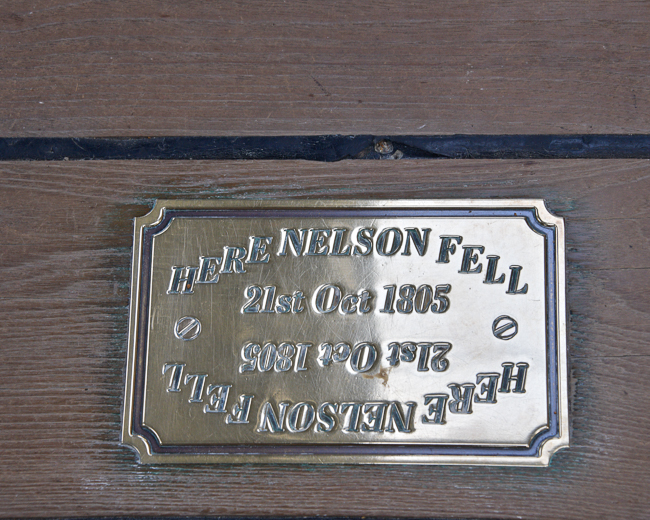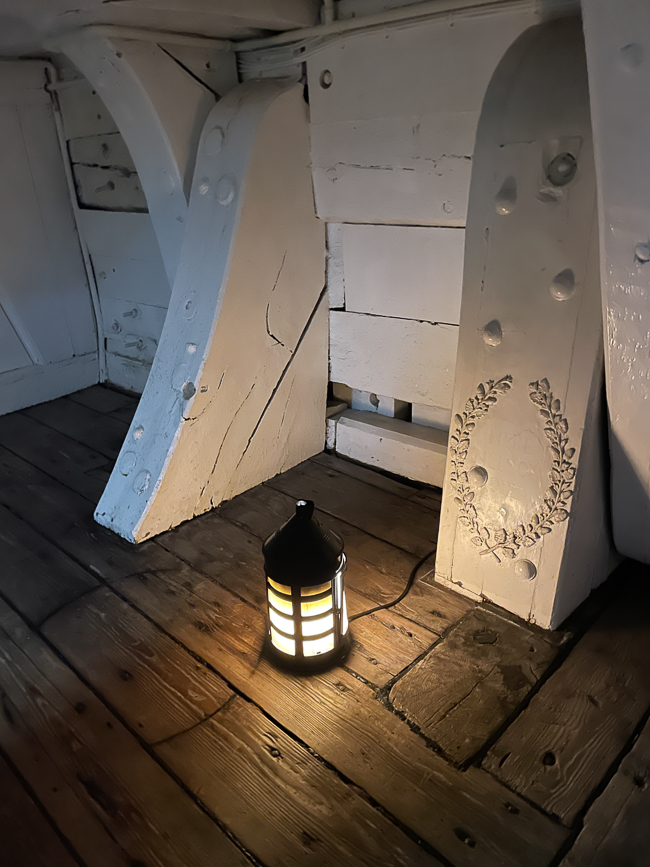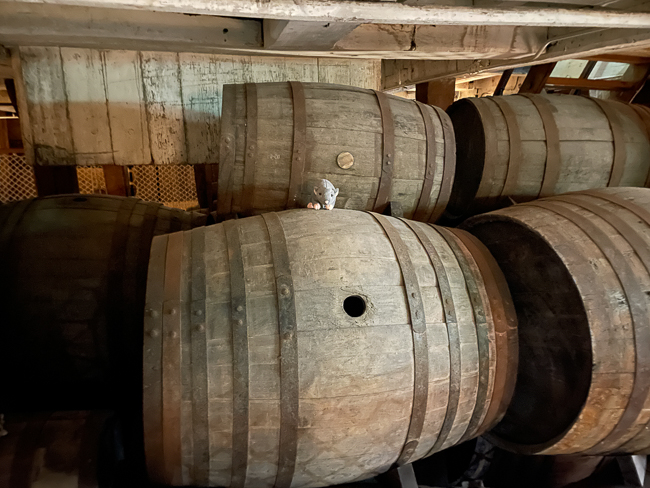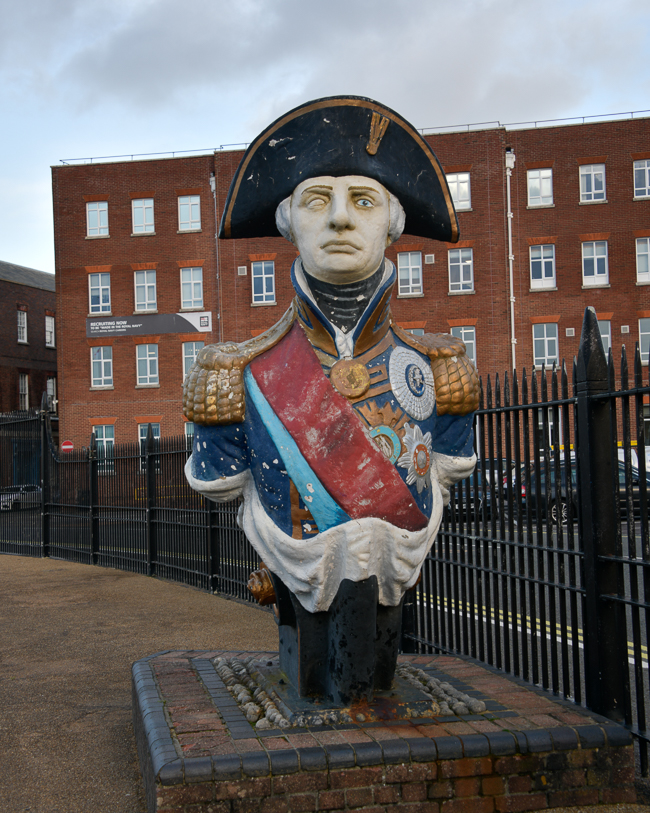Portsmouth, England
November 9, 2023
The HMS Victory is undergoing a massive overhaul, so I was not able to see her as a whole ship from the outside. The inside, however, is an amazing walk through history. It is difficult to convey through pictures or even words, but the 2-3 hours I spent on The Victory were some of the most enlightening and fascinating hours I have ever spent learning history.
I am an American. And yet I know who Admiral Nelson was and The Battle of Trafalgar, but when you walk this ship, you really do feel like you are in the battle from beginning to end. It is a very special experience.
The Battle of Trafalgar was to witness both the defeat of Napoleon Bonaparte’s plans to invade Britain and the death of Admiral Lord Nelson.
HMS Victory is a 104-gun first-rate ship of the line of the Royal Navy. She was ordered in 1758, laid down in 1759, and launched in 1765. In the rating system of the British Royal Navy used to categorize sailing warships, a first-rate was the designation for the largest ships of the line. Building the HMS Victory took around 6,000 trees 90% were oak, and the remainder were elm, pine, and fir.
She is still a commissioned ship, so she has 245 years of service as of 2023, the world’s oldest naval vessel still in commission.
Victory is best known for her role as Lord Nelson’s flagship at the Battle of Trafalgar on October 21st, 1805.
Touring the Victory is a several-hour process and worth every moment. You begin at the top and work your way down to the hold. All along, there are history stops and volunteers that ensure you are the most well-informed person regarding the HMS Victory and the Battle of Trafalgar when you leave.
What one does not really comprehend is how someone such as Horatio Nelson was as revered and admired as any rock star of today. His movements followed, his battles studied, and his death a major state period of mourning.
What never comes across in movies or books is how even the Captain’s rooms are broken down and turned into cannon sites. The lovely blue paneling and doors could be taken down and stored or simply thrown overboard should the ship find itself in a surprise attack. Thus turning the entire area into a battery of cannons.
This is Nelson’s bed. The man only had one arm, so getting in and out of a ship’s bed such as this was something he could do on his own. He was a very proud man and would not accept the help of others when doing simple everyday tasks.
This is what one thinks of when one thinks of sleeping on a ship.
One of the larger cannons on the HMS Victory. The lead sheathing on the top was to protect the firing pin area from the elements until it was needed.
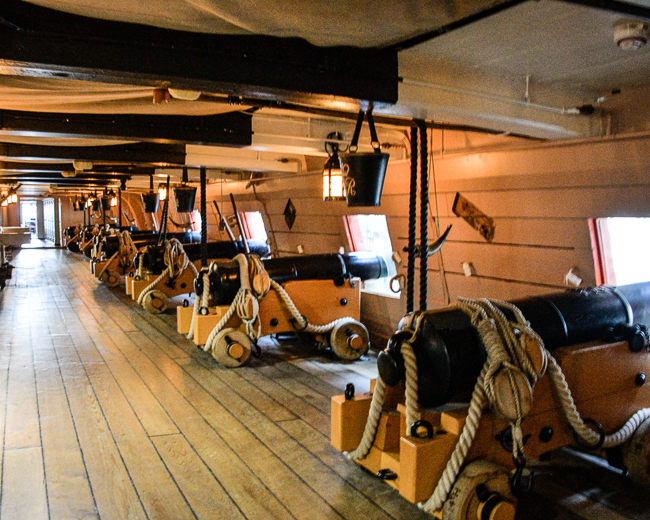 A battery of 32-pounder cannons. The 32-pounder guns were sets of heavy-caliber pieces of artillery mounted on warships in the last century of the Age of Sail. It was usually the most powerful armament on a warship. The British version fired a 32-pound projectile at about .3 miles per second. They were most famous for being mounted on HMS Victory.
A battery of 32-pounder cannons. The 32-pounder guns were sets of heavy-caliber pieces of artillery mounted on warships in the last century of the Age of Sail. It was usually the most powerful armament on a warship. The British version fired a 32-pound projectile at about .3 miles per second. They were most famous for being mounted on HMS Victory.
Firing mechanisms changed over the years to become safer. If that is actually possible, this was a newer flintlock system.
This marks the spot where Admiral Horatio Nelson was hit by a musket ball fired from an enemy ship at a range of 50 feet. The ball entered his left shoulder, passed through a lung, then his spine at the sixth and seventh vertebrae, and lodged two inches below his right shoulder blade in the muscles of his back.
Nelson was carried below decks and died on this spot at half-past four in the afternoon, three hours after he had been shot. The man asked not to be thrown into the sea. Instead, his body was placed in a cask of brandy mixed with camphor and myrrh, which was then lashed to the Victory’s mainmast and placed under guard. The HMS Victory had to be towed to Gibraltar after the battle, and on arrival, Nelson’s body was transferred to a lead-lined coffin filled with spirits of wine.
After laying in state, on January 9th, a funeral procession consisting of 32 admirals, over a hundred captains, and an escort of 10,000 soldiers took the coffin from the Admiralty to St Paul’s Cathedral, where he is buried.
It is well known that rats were an issue on ships. However, what I learned was that rats love gunpowder and would gnaw through entire barrels to get to it. This was obviously an issue regarding the gunpowder itself, but also the fact that the rats would be covered in it and scurry around the ship where open flamed lanterns sat about.
For this reason, gunpowder barrels were always lined in copper or lead.
Rats were also a source of food for the hungry sailors, despite the sailors 5000 per day calorie diet.
About 1,500 British seamen were killed or wounded in the Battle of Trafalgar. In the Spanish and French fleet, 14,000 men were lost.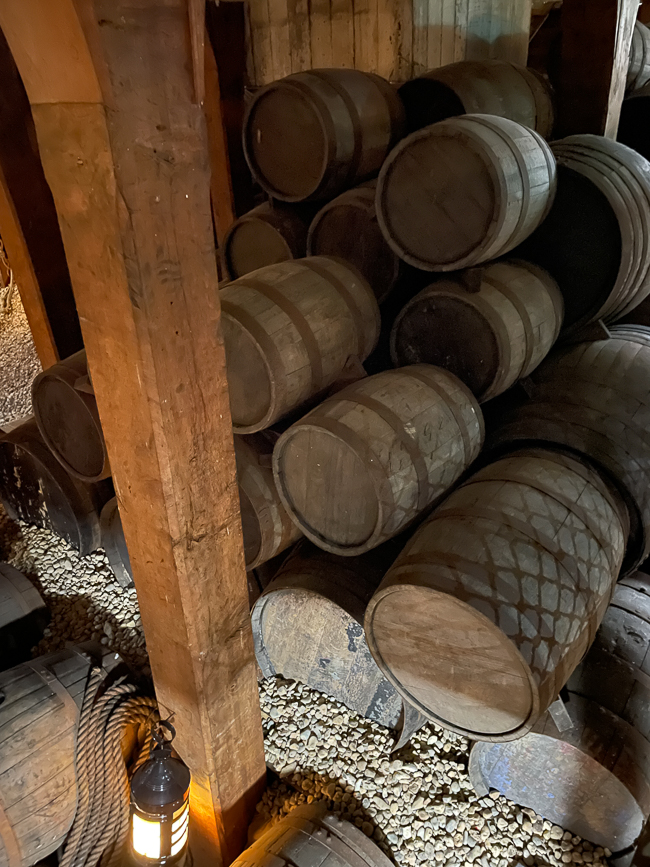
As I have said, this was an amazing experience, and should you find yourself in the neighborhood of Portsmouth, England, set aside a minimum of one to two days to learn about the history of the Age of Sail.
